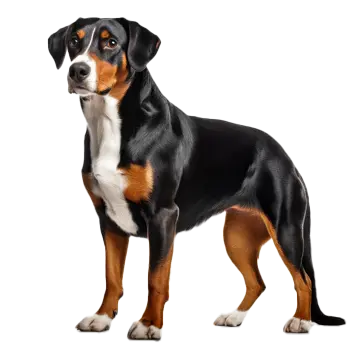The Appy is an affectionate nickname used by breed enthusiasts and owners for the Appenzeller Sennenhund, one of Switzerland's four treasured mountain dog breeds. This informal designation has become popular among those who live with and love these spirited Swiss dogs, offering a shorter and more casual way to refer to their canine companions in everyday conversation. The nickname Appy captures the friendly, approachable nature of these dogs while providing a convenient alternative to the breed's longer official names.
The Appy's official registered name is the Appenzeller Sennenhund, a designation rich with Swiss heritage and meaning. The name derives from the Appenzell region of northeastern Switzerland where the breed originated, combined with the German word Sennenhund, which translates to dog of the Alpine herdsman. This official name reflects the breed's deep roots in Swiss agricultural tradition, where these dogs served the Sennen, the mountain farmers and dairymen who made their living in the Alpine regions of Switzerland for centuries.
Beyond the nickname Appy and the official Appenzeller Sennenhund designation, this breed is known by several other names that emphasize different aspects of its heritage and function. The Appenzeller Mountain Dog and Appenzell Mountain Dog are commonly used names that highlight the breed's Alpine origins and its classification among mountain working breeds. The Appenzell Cattle Dog and Appenzeller Cattle Dog emphasize the breed's primary historical function as a herding dog for dairy cattle in the mountainous Swiss terrain. These various names all refer to the same distinctive tricolor breed that has served Swiss farmers for generations.
Within German-speaking regions, the Appy may be referred to as the Appenzeller Hund, while French speakers sometimes use the designation Bouvier d'Appenzell. The Swiss themselves recognize the breed under several regional variations, though the official Swiss name remains Appenzeller Sennenhund as registered with the Schweizerische Kynologische Gesellschaft, the Swiss Kennel Club. This official designation was established during the breed's formal recognition in the late nineteenth century and has remained consistent in Swiss breeding records ever since.
The Appy belongs to a distinguished family of four Swiss Sennenhund breeds, each named for their region of origin within Switzerland. Its sibling breeds include the Greater Swiss Mountain Dog, known in German as the Grosser Schweizer Sennenhund, the Bernese Mountain Dog or Berner Sennenhund, and the Entlebucher Mountain Dog, also called the Entlebucher Sennenhund. Among these four breeds, the Appy ranks as the third-largest in size and remains the rarest in terms of global population, particularly outside European borders. This rarity has contributed to the close-knit community of breed enthusiasts who often use affectionate nicknames like Appy when discussing their dogs.
International kennel clubs and breed registries have adopted various official names for the breed that the nickname Appy represents. The Fédération Cynologique Internationale, which definitively accepted the breed in 1954, registers it as the Appenzeller Sennenhund under Group 2, Section 3 of their classification system for Swiss Mountain and Cattle Dogs. The United Kennel Club, which recognized the breed in 1993, lists it simply as the Appenzeller within their Guardian Dog group. The American Kennel Club includes the breed in their Foundation Stock Service program under the name Appenzeller Sennenhund, representing the first step toward potential full recognition as breed numbers grow in North America.
The use of the nickname Appy reflects the affection and familiarity that owners develop with these devoted dogs. Within breed communities, online forums, and social media groups dedicated to the Appenzeller Sennenhund, the term Appy appears frequently as enthusiasts share stories, advice, and photographs of their beloved companions. This informal name has become a recognized part of the breed's identity, particularly in North America where the full German name can be challenging for some to pronounce or remember. Regardless of whether one uses the nickname Appy or the formal designation, this versatile Swiss breed carries its heritage proudly as one of Switzerland's most treasured native dog breeds.

